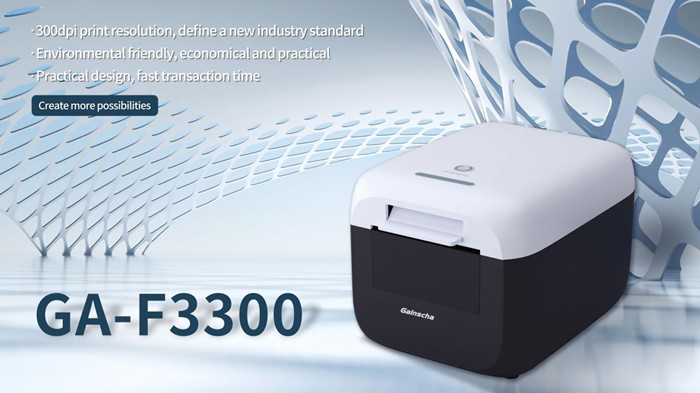Thermal receipt printers play a crucial role in various industries, ensuring smooth and efficient transactions. To maximize their lifespan and maintain optimal functionality, regular maintenance is essential. In this guide, we will explore the key steps involved in maintaining a thermal receipt printer.

1. Routine Cleaning: Preserving Print Quality and Performance
Regular cleaning is the cornerstone of thermal receipt printer maintenance. The print head, sensors, and paper path can accumulate dust, debris, and residue from thermal paper, leading to diminished print quality and potential malfunctions. To clean the printer, use a soft, lint-free cloth and approved cleaning solutions. Gently wipe the print head and sensors, ensuring thorough cleaning without causing damage. This routine cleaning helps prevent contaminant buildup and preserves the printer's performance.
2. Visual Inspections: Early Detection of Potential Issues
Routine visual inspections are crucial for identifying potential issues before they escalate. Regularly check for visible signs of wear, such as frayed cables or damaged components. Inspect the paper path for any obstructions or foreign objects that may impede the smooth flow of paper. Visual checks can help catch problems early, allowing for timely intervention and preventing disruptions in printer functionality.
3. Calibration and Alignment: Ensuring Precision Printing
Calibrating and aligning a thermal receipt printer is essential for maintaining precision in printing. Over time, the printer may experience changes in alignment that affect the accuracy of printed information. Refer to the printer's user manual for instructions on calibrating and aligning the print head and sensors. Following the recommended calibration procedures ensures that the printer maintains accurate and legible prints, avoiding misalignments or printing errors.
4. Paper Roll Replacement: Preventing Jams and Inefficiencies
Regularly replacing the paper roll is a simple yet effective maintenance task. When the paper roll is near depletion, it can lead to paper jams, inconsistent printing, and disruptions in service. Follow the manufacturer's guidelines for paper roll replacement, ensuring that the paper is loaded correctly to prevent jams. Regular maintenance of the paper roll contributes to smooth printing operations and reduces the risk of downtime.
5. Firmware and Software Updates: Keeping Technology Current
Keeping the firmware and software of the thermal receipt printer up to date is vital for optimal performance. Manufacturers often release updates that address bugs, enhance features, and improve overall functionality. Regularly check for firmware and software updates on the manufacturer's website and follow the provided instructions for installation. Keeping the technology current ensures that the printer benefits from the latest improvements and remains compatible with evolving software environments.
In Conclusion: Ensuring Longevity and Efficiency Through Maintenance
In conclusion, maintaining a thermal receipt printer involves a comprehensive approach, including routine cleaning, visual inspections, calibration, paper roll replacement, and staying current with firmware and software updates. By incorporating these practices into a regular maintenance routine, businesses can ensure that their thermal receipt printers operate efficiently, providing reliable service and minimizing disruptions.
For those seeking guidance on thermal receipt printer maintenance or looking for reliable printer supplies, it is advisable to reach out to a reputable supplier. A trustworthy supplier can provide information on the best maintenance practices and offer high-quality cleaning products and replacement parts tailored to thermal receipt printers. If you have further questions or are looking for a reliable thermal receipt printer supplier, feel free to contact us. Our team is dedicated to assisting you in maintaining the efficiency and longevity of your thermal receipt printers.









